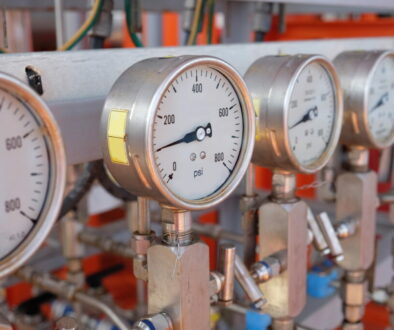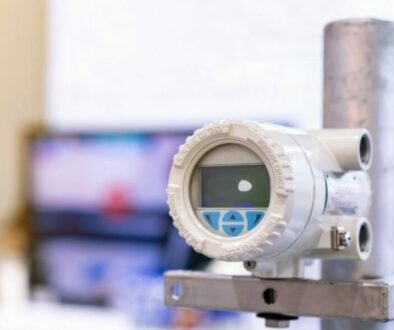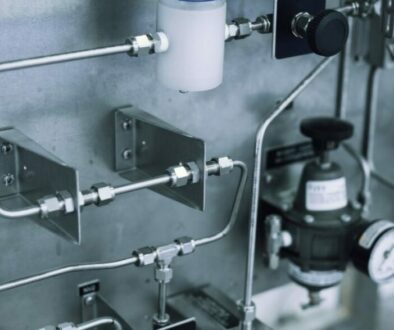Different Types of Mass Flow Meters
A mass flow meter, or inertial flow meter, measures the mass flow rate of gases or liquids traveling through a tube. The gas passes by a fixed point within the meter and it measures the mass per unit time, not the volume per unit time. There are many different types of mass flow meters that produce the same measurement but do it in a different way.
Coriolis Mass Flow Meter
A Coriolis mass flow meter measures mass through inertia. As a dense gas or liquid travels through a tube, the tube is vibrated by a small actuator within the meter. The acceleration creates a measurable twisting force on the tube that is proportional to the mass. Coriolis that have dual curved tubes have higher sensitivity and lower pressure drop. Coriolis meters are the most accurate type of mass flow meter. However, they are susceptible to errors when bubbles are present in liquids. The bubbles create “splashing” in the tube, generate noise, and change the amount of energy needed to vibrate the tube.
Thermal Mass Flow Meter
A thermal mass flow meter measures gas flow rate based on the convective heat transfer of a heated surface to the flowing gas or liquid. They measure the mass flow rate of liquids and gases directly. Volumetric measurements are affected by process and ambient conditions that can alter unit volume. Mass flow measurement is unaffected by changes in viscosity, temperature, pressure, or density. They are used in monitoring or controlling mass related processes like chemical reaction that depend on the relative masses of unreacted substances.
Impeller Turbine Mass Flow Meter
An impeller turbine mass flow meter uses two rotating elements in the fluid stream, a turbine and an impeller. Both have channels, or pathways, that the fluid can pass through. The impeller moves at a constant speed, being driven by synchronous motor. The motor moves the impeller through a magnetic coupling and imparts an angular velocity on the fluid as it flows through the meter. The downstream turbine removes all the angular momentum from the fluid and receives torque proportional to the angular momentum. The turbine is restrained by a spring that deflects through an angle that is proportional to the torques exerted on it by the fluid and giving a measure of mass flow.
Twin Turbine Mass Flow Meter
Twin turbine mass flow meters work on the principle of fluid inertia. This type of mass flow meter has two rotating turbine wheels, and both have different blade pitches. They are coupled together by a flexible coupling within the tube. As each turbine wheel attempts to spin at its own speed, the inertia of the fluid causes a differential torque to develop between them. The greater the mass flow rate, the more the angular displacement between the two wheels.
Kelly Pneumatics has digital air flow meters for sale that are accurate and dependable. Check out our website or contact us to get yours today.




